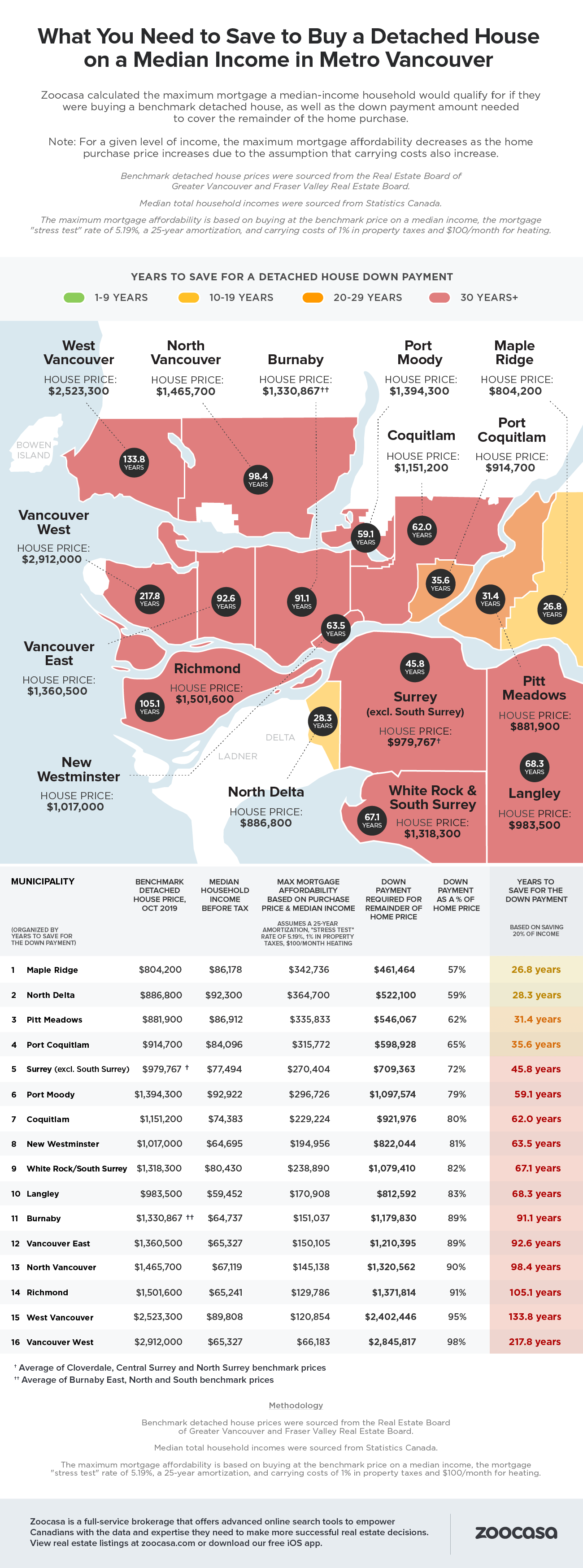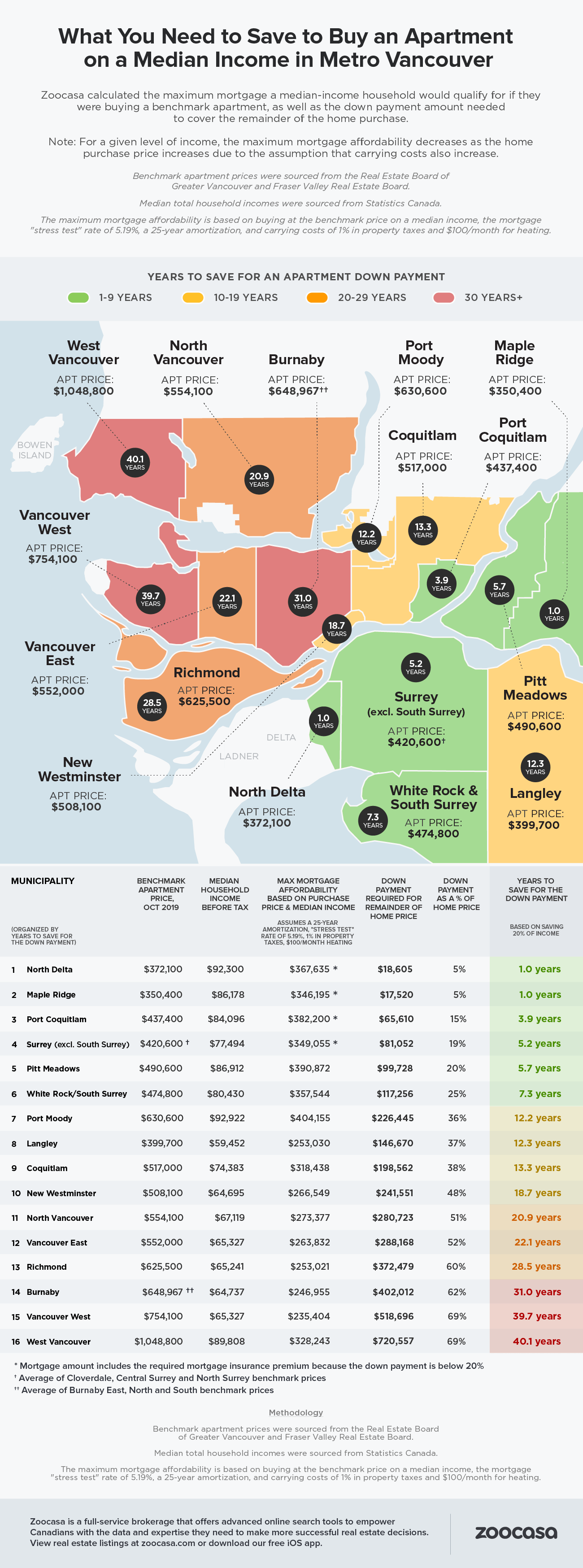What can Canadian home buyers and sellers expect as we enter a new decade? Check out Zoocasa’s top five predictions for home sales, price growth, and mortgage rates in the new year!
1. Home Sales Will Continue to Recover from 2018 Slump
Canada’s housing market has come a long way from its 2016-2018 boom-bust cycle. After sustaining roughly two years of softer sales and price growth following the introduction of the federal mortgage stress test, as well as provincial taxes and policies in Ontario and British Columbia, demand for homes for sale found its footing in the second half of 2019.
Canada’s largest urban centres, such as the Greater Toronto Area and Greater Vancouver, as well as its strongest secondary markets, started to experience sustained rebounds in home buyer demand due to a number of factors, including lower interest rates; a subdued Bank of Canada (BoC), combined with strength in the bond market, kept the consumer cost of borrowing at historic lows all year long.
That’s helped soften the blow of the stress test, which requires insured mortgage borrowers to qualify at the Bank of Canada’s five-year benchmark rate, while uninsured borrowers must qualify for a rate roughly 2 percentage points higher than the one they’ll get from their bank. Not only did an overall lower rate environment pull the BoC’s qualifying rate down to 5.19% from 5.39% this year, but all borrowers enjoyed deeply discounted fixed mortgage rates, which outpriced even their variable counterparts at some of the nation’s most competitive lenders. With renewed purchasing power in hand, this drove buyers back into the market, causing year-over-year sales and price growth to spike in most of Canada’s major cities.
According to several real estate analysts and associations, home buyers and sellers can expect this trend to extend well into 2020. In its most recently revised forecast, the Canadian Real Estate Association expects the year to close out with 486,800 transactions, up 6.2% from 2018, before climbing to 530,000 sales next year, at an increase of 8.9%. The national average home price is expected to climb 2.3% to $500,000, and up 6.2% to $531,000 in 2020.
This optimistic outlook is echoed by the Canada Mortgage and Housing Corporation, which forecasts both sales and prices will “fully recover” from their recent declines, supported by growth in income among buyers, as well as population booms in Canada’s busiest job markets.
“Overall, economic and demographic conditions will remain supportive of housing activity over the forecast horizon, halting the declines in starts, sales, and average home prices that followed the highs of 2016 – 2017,” it states in its most recent Housing Market Outlook. Nation-wide, the CMHC expects 2020 sales to fall between 480,600 – 497,700 units, a year-over-year uptick of roughly 6%. The average price will fall between $506,200 – $531,000, up 5.6 – 6.7% from this year.
2. BC and Ontario Will Lead Housing Market Growth
However, as has been the long-term trend, the strongest action will be seen in the Ontario and British Columbia markets, particularly in the latter as it recovers from a slew of foreign buyer and non-resident speculation taxes. BC sales are expected to jump a whopping 20 – 22.6% next year with 74,600 – 84,400 transactions, with prices up 2.8 – 3.6% at an average of $675,000 – $749,500, says CMHC.
In the Ontario real estate market, sales will hit between 204,200 – 213,800 units (+4.2 – 7.3%), with prices between $614,000 – $633,700 (+5.4 – 6.5%).
In contrast, overall volumes and growth will be much lower in the Prairie markets, where economic performance and spending power remain challenged by a downturn in the energy industry and housing markets are plagued by oversupply. In Alberta, 2020 sales will hit between 52,300 – 56,900 units (+4.1 – 4.2%), while prices will inch up to the $379,700 – $383,400 range (+1.9 – 2.9%). In Saskatchewan, sales are forecasted to reach between 10,800 – 11,200 (+3.8 – 5.6%), with prices between $275,100 – $283,900 (+0.5 – 1.5%).
Quebec, however, will continue to experience stable sales growth and faster-than average price surges; CMHC calls for a total of 91,500 – 96,500 transactions in 2020 (+0.3 – 2.5%), with the average price between $341,000 – $348,000 (+6.2 – 6.4%).
3. It’ll Be a Sellers’ Market – Especially in the GTA
It’s no secret that market conditions in Canada’s largest cities have been largely defined by a growing supply and demand gap. While factors such as foreign and domestic investment have also contributed to too-hot-to-handle price growth, that there have been too few homes to satiate demand, particularly in the GTA markets, set the stage for bidding wars and a stratospheric rise in home values over the course of 2016. That infamously led to the implementation of the Ontario Fair Housing Plan, which included a number of measures including a foreign buyers’ tax and rent controls, to cool the demand end of the market.
For a time, these new policies were effective in chilling the market; combined with the federal mortgage stress test, the measures thoroughly spooked sellers, leading to a 33% drop in new listings following their announcement. As well, home prices plunged across the province, with York Region bearing the brunt with double-digit declines.
While sales and prices have rebounded steadily over the past year, the same can’t be said for new listings. From a national perspective, Canadian real estate as a whole could be considered a sellers’ market in November, with a sales-to-new-listings ratio of 66.3%, as new supply shrank by -2.7% year over year. As well, the total months of inventory – the length of time it would take to completely sell off all available homes for sale – currently sits at 4.7 months, its lowest level since 2007.
However, recent reports out of the GTA show that lack of supply is a far more acute issue. The end-of-year numbers from the Toronto Real Estate Board reveal the SNLR for the region was 81%, indicating just under 20% of all new listings brought to market were sold in November.
TREB’s analysts are raising concerns that should undersupply persist, it could set the stage for the type of unsustainable price growth seen in the 2016 market, which was what prompted new regulatory change in the first place.
“Strong population growth in the GTA coupled with declining negotiated mortgage rates resulted in sales accounting for a greater share of listings in November and throughout the second half of 2019,” says Jason Mercer, TREB’s chief market analyst. “Increased competition between buyers has resulted in an acceleration in price growth. Expect the rate of price growth to increase further if we see no relief on the listings supply front.”
4. Mortgage Rates Will Remain Cheap
The BoC – the national central bank that sets the cost of borrowing for consumer lenders – has kept mortgage interest rates relatively low and stable for the entirety of 2019, keeping its trend-setting overnight lending rate at 1.75% in each of its eight announcements. As a result, banks and credit unions were able to keep their variable mortgage and line of credit products competitively priced. As well, yields for national bonds, which lenders use to set the cost of fixed-rate borrowing, hit historic lows, indicating increased popularity with no imminent risk of a devaluing rate hike on the horizon.
Due to this, borrowers have had access to some of the lowest mortgage rates on record in 2019 – and this is likely to persist throughout the new year, according to the latest communications from the BoC. In the Bank’s year-end speech, Governor Stephen Poloz outlined the major long-term forces that will shape the economy and interest rates over the next year – and they look to stick to status quo.
Overall, the BoC will take to the same cautious stance it did in 2019; economic factors at home and abroad aren’t quite strong enough to warrant higher interest rates, but are stable enough to prevent a rate cut. Avoiding a cut also leaves some wiggle room in case global trade and recession risks do materialize, and the BoC needs to take action.
The BoC points to ongoing trade wars – and particularly tensions between the U.S. and China – as the biggest risk that could upend the global economy and stall growth. It also points out that slowing populations in many economies is holding back global output. “Because slow growth is likely to persist, interest rates will stay lower than usual,” the BoC states.
Other factors that make a rate hike less likely include the latest fiscal update from the federal government, which reveals there will be a $26.6-billion deficit recorded for 2019, and $28.1-billion expected in 2020. This, combined with Canada’s notoriously high levels of household debt, remain key vulnerabilities should the economy go belly up – and the BoC acknowledges that lower interest rates will help fuel irresponsible borrowing.
“When interest rates are low, households, firms and governments tend to borrow more. That supports the economy, but high debt means more vulnerability if something bad happens,” it states.
5. It Might Get Easier to Qualify for a Mortgage
Another interesting development is renewed scrutiny for the aforementioned mortgage stress test – in December, a letter from Prime Minister Justin Trudeau indicated Federal Finance Minister Bill Morneau will take a second look at the controversial test’s criteria, and potentially make tweaks to allow for more flexibility when qualifying borrowers.
While no details have been released as of yet, this could include lowering the qualifying rate from its current 5.19%, or making it more dynamic based on individual borrowers’ profiles, As well, they could remove the current requirement for borrowers to be re-stress tested when switching lenders, a measure that has drawn heavy criticism from the mortgage industry for discouraging consumer empowerment and competitiveness.









